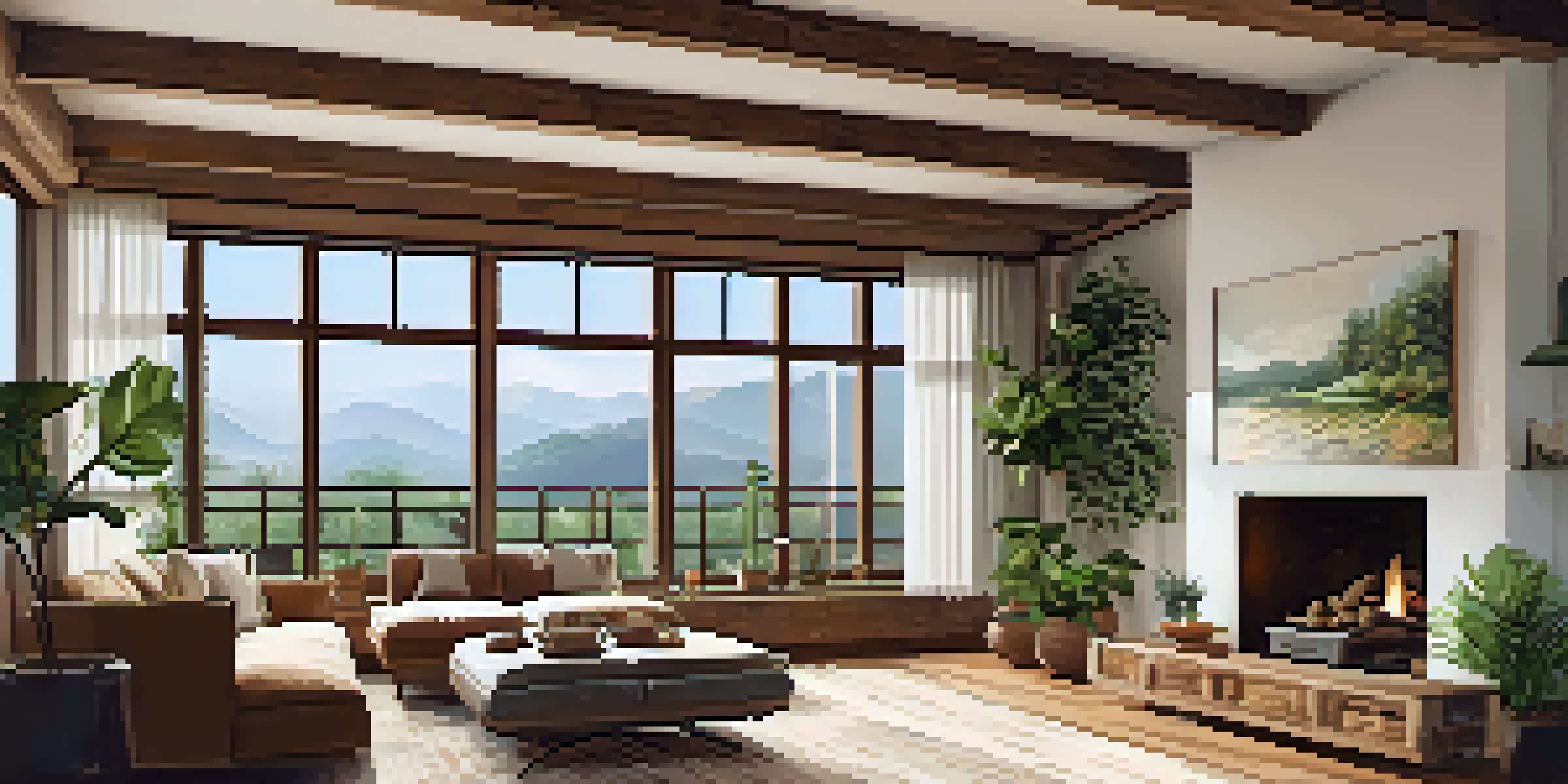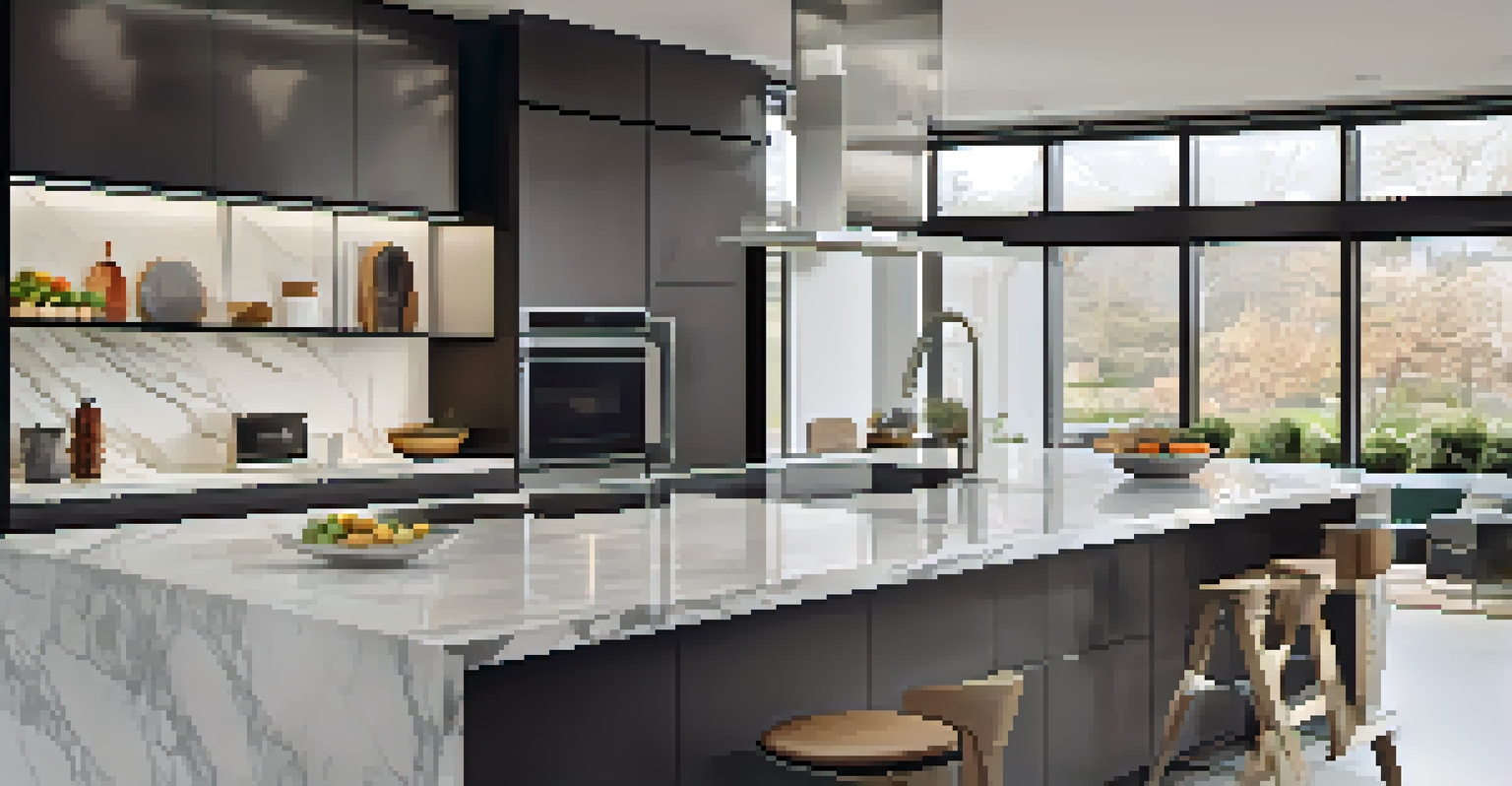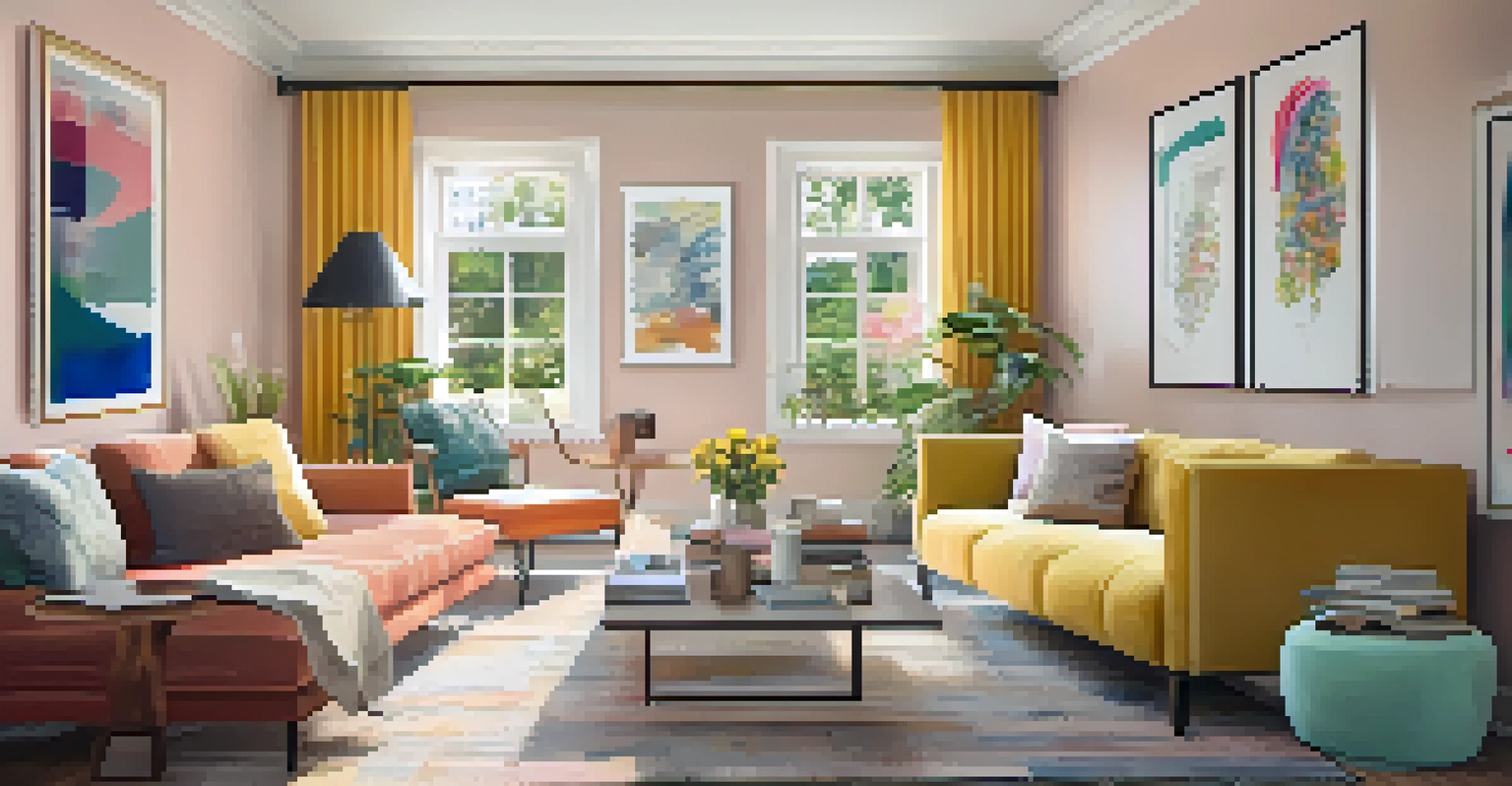Home Design for Future Generations: What to Expect

Sustainable Materials: The Future of Eco-Friendly Homes
As we look to the future, sustainable materials are set to play a pivotal role in home design. Think bamboo flooring, recycled metal roofing, and eco-friendly insulation—these materials not only reduce environmental impact but also add a modern touch to our homes. Homeowners will increasingly prioritize sustainability, opting for products that minimize carbon footprints.
The future will be about building homes that are not just shelters but that enhance our well-being and foster connections among people.
For example, imagine a home built with reclaimed wood beams that tell a story of their own, or walls painted with non-toxic, low-VOC paint that keep indoor air fresh. This shift towards eco-conscious materials reflects a broader cultural movement towards environmental stewardship. It's not just about aesthetics; it's about leaving a legacy for future generations.
By embracing these sustainable options, we're not only enhancing our living spaces but also contributing to a healthier planet. The integration of technology will further support this trend, allowing homeowners to track their energy use and make informed decisions. Ultimately, sustainable materials are paving the way for a greener, more responsible approach to home design.
Smart Homes: The Rise of Integrated Technology
Smart technology is reshaping how we interact with our homes, making them more intuitive and user-friendly. Picture a home where your lights dim automatically when it's movie time, or your thermostat adjusts based on your daily routine. This level of integration not only boosts convenience but also enhances energy efficiency.

As we move forward, expect to see more homes equipped with smart appliances that communicate with each other. For instance, your refrigerator could alert you when you're running low on groceries, or your security system could send alerts directly to your smartphone. These advancements make home management a breeze, catering to the needs of busy families and tech-savvy individuals alike.
Sustainable Materials for Homes
Sustainable materials like bamboo and reclaimed wood are essential for eco-friendly home design, reducing environmental impact while enhancing aesthetics.
The future of home design will undoubtedly feature a blend of comfort and control, allowing homeowners to personalize their environments seamlessly. With the continued evolution of artificial intelligence and IoT (Internet of Things), homes will be more than just structures; they will become living ecosystems that adapt to our lifestyles.
Flexible Spaces: Adapting Homes for Changing Needs
In an increasingly dynamic world, the need for flexible living spaces has never been greater. Homes that can adapt to various functions—like a guest room that transforms into a home office—are becoming essential. This trend is particularly appealing to families who may need to accommodate growing children or aging parents.
Sustainable architecture is not just a trend; it's a fundamental shift in how we think about our homes and the environment.
Imagine a cozy nook that can serve as a reading corner one day and a play area the next. Such multifunctional spaces not only optimize square footage but also promote a sense of community within the home. This versatility ensures that homes can evolve alongside the changing needs of their occupants.
By integrating movable walls or convertible furniture, homeowners can create spaces that are both stylish and practical. As we look to the future, the ability to reconfigure our living spaces will foster a more adaptable and inclusive environment, ensuring that homes remain functional for everyone.
Health and Wellness: Designing for Well-Being
In recent years, the focus on health and wellness has significantly influenced home design. Future homes will prioritize features that promote physical and mental well-being, such as ample natural light, indoor plants, and dedicated relaxation areas. These elements create an atmosphere that nurtures health and happiness.
Consider the benefits of a home with large windows that invite sunlight and fresh air, or a designated meditation room that encourages mindfulness. The incorporation of biophilic design—where nature is integrated into our living spaces—can enhance mood and reduce stress. It's about creating a sanctuary that supports our overall well-being.
Smart Technology Integration
The rise of smart technology enables homes to be more intuitive and energy-efficient, offering features that adapt to homeowners' lifestyles.
As we continue to understand the connection between our environments and our health, expect to see more homes designed with wellness at their core. From air purification systems to ergonomic furniture, every aspect of home design will reflect a commitment to fostering a healthier lifestyle.
Community-Centered Designs: The Return to Shared Spaces
As urban living becomes more prevalent, there's a growing trend toward community-centered home designs. These spaces encourage social interaction and foster a sense of belonging among residents. Think of shared gardens, communal kitchens, and common areas that invite neighbors to connect.
This shift signifies a departure from the isolated lifestyle often associated with suburban living. By designing homes that promote community engagement, we can enhance our quality of life while creating lasting relationships with those around us. It's about building neighborhoods that feel like an extension of our families.
In the future, expect to see more developments that prioritize communal living without sacrificing privacy. With thoughtful design, we can create environments that balance individual needs with collective experiences, ultimately enriching our lives and strengthening community ties.
Aesthetic Trends: Embracing Minimalism and Personalization
The aesthetic of future homes will likely embrace a blend of minimalism and personalization. While minimalism focuses on simplicity and functionality, personal touches allow homeowners to express their unique styles. This combination creates spaces that are not only beautiful but also meaningful.
Imagine a sleek, clutter-free space adorned with carefully chosen art pieces and family heirlooms that tell your story. This approach fosters an environment that feels both contemporary and deeply personal. By prioritizing quality over quantity, homeowners can curate their spaces in a way that reflects their identity.
Health and Wellness in Design
Future home designs will prioritize health and wellness by incorporating natural light and biophilic elements that create a nurturing environment.
As we move forward, expect to see design choices that prioritize both form and function, creating visually stunning yet livable spaces. The emphasis on personalization will allow future generations to create homes that resonate with who they are, ensuring that their living spaces feel uniquely theirs.
The Impact of Climate Change on Home Design
Climate change is reshaping the way we design homes, pushing us towards resilient and adaptive building practices. As extreme weather events become more common, homes will need to withstand the elements. This might mean elevated structures in flood-prone areas or materials that can endure harsher climates.
Future designs will likely incorporate features like green roofs that absorb rainwater, solar panels for renewable energy, and sturdy insulation to regulate temperature. These elements not only enhance sustainability but also prepare homes for the realities of a changing environment. It's about building resilience into our living spaces.

As awareness of climate issues grows, homeowners will increasingly demand designs that reflect their commitment to sustainability. This shift will drive innovation in building practices, ensuring that homes are not only beautiful but also equipped to thrive in the face of future challenges.